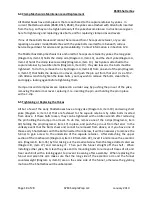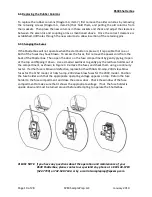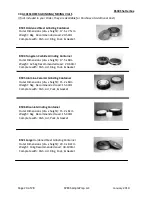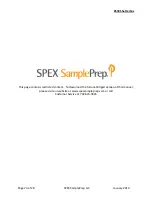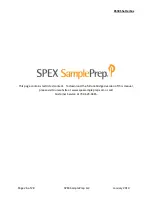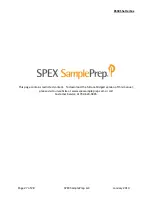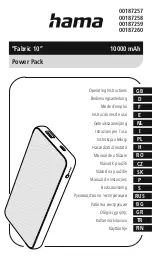
8530 Shatterbox
Page 15 of 28
SPEX SamplePrep LLC January 2010
5.1.3
Loading a Shatterbox Grinding Container
Before using a Shatterbox grinding container, check to make sure that it is clean and that the
gasket or O-ring is in good condition. Before it is loaded into the container, the sample should
be crushed to proper feed size as discussed previously: approx. 1/4" for the steel and tungsten
carbide containers, and 1/8" for the alumina and zirconia ceramic containers.
Place the sample in the grinding container AFTER the ring or ring-and-puck is in place. Do not
overload the grinding container (see “
Choice of Grinding-Container Size”
above for
recommended loads). If loading a steel or tungsten carbide grinding container with a ring as
well as a puck, place the sample more or less evenly on both sides of the ring.
Before putting the cover on the grinding container, check the position of the O-ring, and make
sure no sample is on the rim of the container, or underneath or on top of the ring and puck. A
good way to tell whether the cover is firmly seated is to rotate it slightly, or slide it from side to
side; if sample particles are preventing the cover from closing tightly, this will be apparent.
If the cover of the grinding container is not firmly seated when the container is clamped into
place, it is likely that the clamp will loosen during grinding. At best the grinding container will
leak. At worst, the container can leave the clamp, causing damage to both the mill and
container.
5.1.4
Emptying and Cleaning the Grinding Container
The grinding container is usually emptied by brushing out the ground sample. Typically a
technician will start by brushing sample off the underside of the cover into the container, and
brushing off the tops of the puck and ring. Then the ring is lifted partway out of the container
and brushed off, followed by the puck. Finally the container is tilted and the entire sample
brushed out. Some technicians recommend coarse-bristled brushes (for example, inexpensive
Nylon paintbrushes) because they are easy to clean.
WARNING: Finely pulverized sample always presents a respiratory hazard; a dust mask or
other protection should be worn when working with it.
Grinding containers should be cleaned after use. Methods have included wiping with a damp
paper towel, blowing out with an air hose, rinsing with water or alcohol, etc. Most of these
methods are not very effective, and blowing the dust out of a container with an air hose
certainly causes a respiratory hazard. We recommend a two-minute period of grinding with a
mixture of clean quartz sand, hot water, and soap or laboratory detergent. The residue is easily
and safely washed out of the container, which then may be dried.
Technicians who are particularly concerned about cross-sample contamination may adopt the
"grind and discard" technique. After sample A has been ground and the grinding container
nominally cleaned, a portion of sample B is ground and discarded, and the container cleaned
again. Now it should be possible to grind a portion of sample B without contaminating it with
sample A.


















